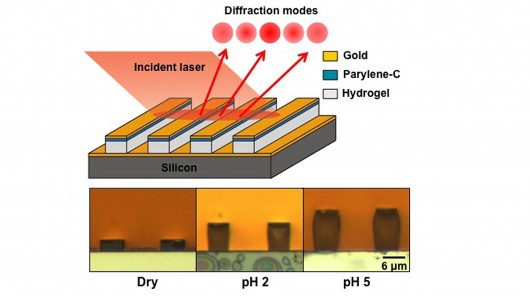Scientists have used gelatinous hydrogel to create an inexpensive new type of biochemical sensor that is highly sensitive, sturdy, long-lasting, and has few moving parts.
The gel expands or contracts according to the acidity of its environment, a quality that allows the sensor to measure changes in pH down to one one-thousandth on the pH scale. This amount of accuracy, along with its robustness, could make it ideal for chemical and biological applications such as environmental monitoring in waterways and glucose monitoring in blood.
Developed at Indiana’s Purdue University, the hydrogel within the device is formed into a series of raised stripes known as a “diffraction grating,” separated by lower-lying spaces. Both the stripes and the spaces are covered in separate coatings of gold. As the gel expands and contracts according to acidity in its environment, the pattern of stripes and spaces changes. When a laser is shone on the gold/hydrogel, changes in that pattern cause the reflection of the laser light to be diffracted differently. The sensor measures changes in the diffraction, and from that deduces pH levels.









